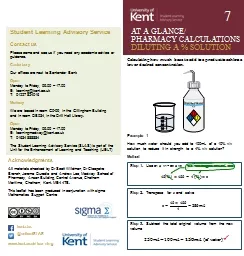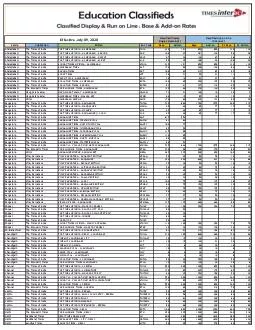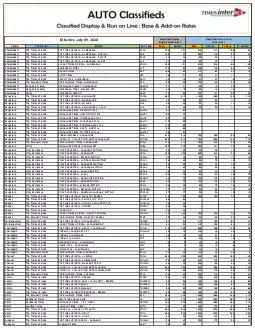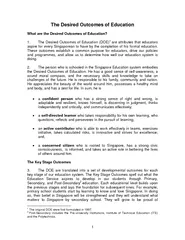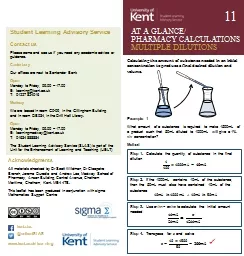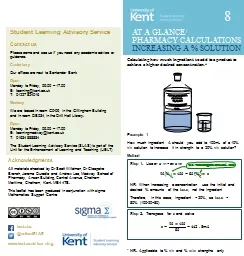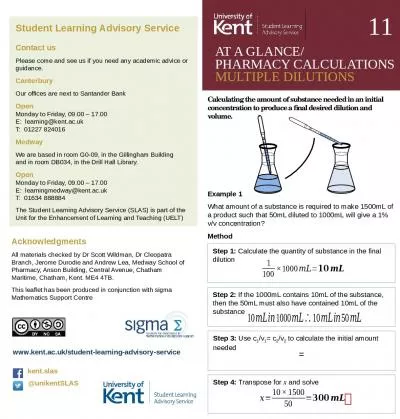PPT-Calculating how much base to add to a product to achieve a lower desired concentration.
Author : celsa-spraggs | Published Date : 2020-01-21
Calculating how much base to add to a product to achieve a lower desired concentration Example 1 How much water should you add to 100mL of a 10 vv solution to reduce
Presentation Embed Code
Download Presentation
Download Presentation The PPT/PDF document "Calculating how much base to add to a p..." is the property of its rightful owner. Permission is granted to download and print the materials on this website for personal, non-commercial use only, and to display it on your personal computer provided you do not modify the materials and that you retain all copyright notices contained in the materials. By downloading content from our website, you accept the terms of this agreement.
Calculating how much base to add to a product to achieve a lower desired concentration.: Transcript
Download Rules Of Document
"Calculating how much base to add to a product to achieve a lower desired concentration."The content belongs to its owner. You may download and print it for personal use, without modification, and keep all copyright notices. By downloading, you agree to these terms.
Related Documents

